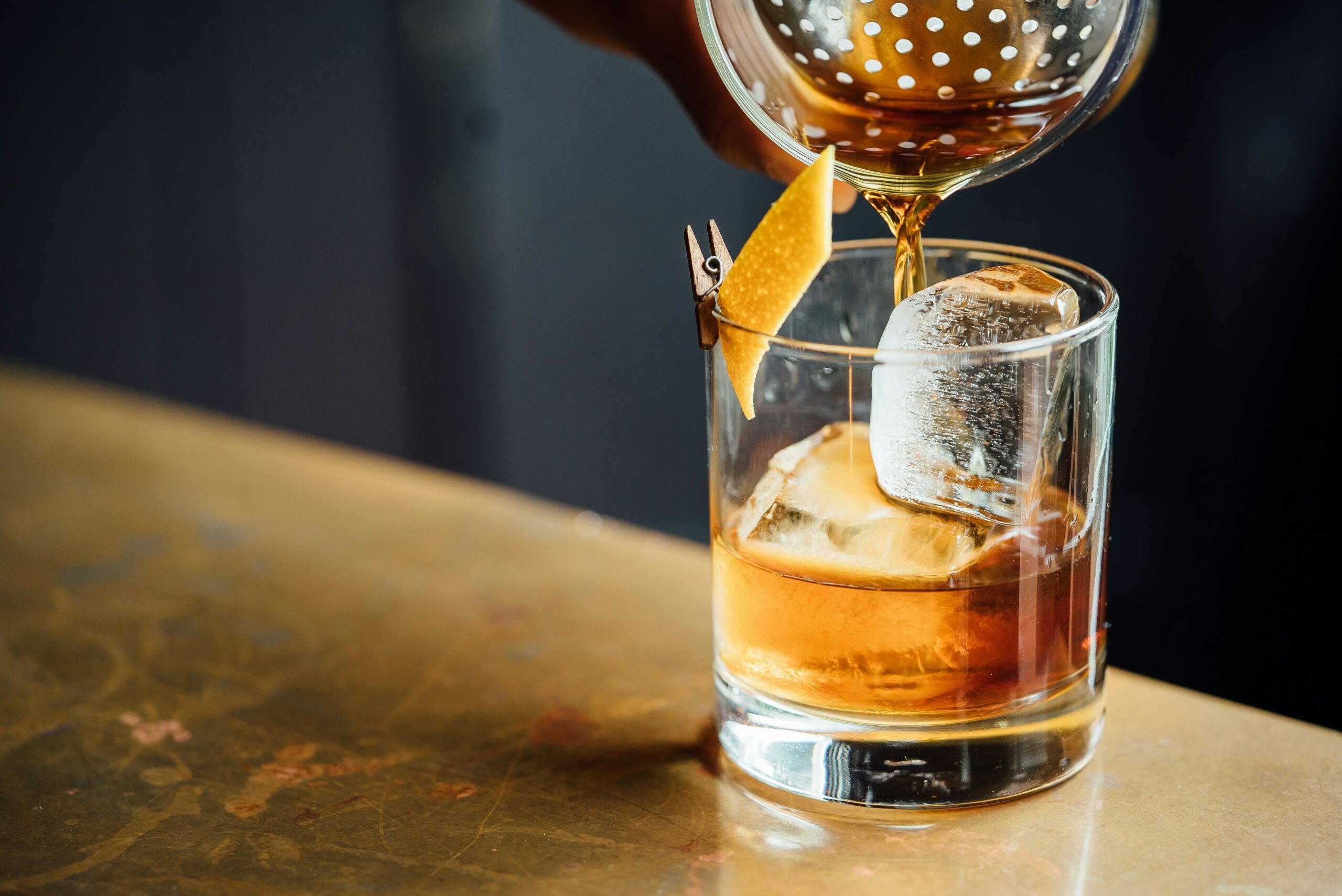
Jake Rollin
Jake (he/him) can be found primarily working in the Beer and Spirits departments, though he occasionally dabbles in Wine. He loves helping customers brainstorm ideas for new and interesting cocktails (ask him about his Caprese Sour cocktail), and talking all things whiskey. His fridge is stocked with a healthy combination of local hazy IPAs, Belgian beers, and Riesling, and he has an ever-growing whiskey collection.
Blended Whiskey: The Art of Harmony
When most people think of whiskey, images of single malts or bourbons often come to mind. However, there’s a world of complexity and artistry in blended whiskey that often gets overlooked. This versatile spirit has a rich history and offers a diverse range of flavors that can appeal to both seasoned whiskey connoisseurs and newcomers alike.
A Brief History of Blended Whiskey
The origins of blended whiskey can be traced back to Scotland in the 19th century. As the demand for whiskey grew, distillers realized that combining different whiskies from various regions and ages could create a more consistent and approachable product. This practice became increasingly popular as it allowed for the balancing of flavors and the creation of new and unique flavor profiles.
Initially, the primary goal of blending was to mask the harsher qualities of young whiskies. However, as the craft of blending evolved, it became clear that this process could be used to create extraordinary and complex spirits. The ability to combine different grains, distillation methods, and aging techniques opened up endless possibilities for experimentation and innovation.
The Art of Blending
Crafting a great blended whiskey is truly an art form. It requires a deep understanding of the individual components and a skilled palate to harmonize them into a cohesive whole. Blending typically involves combining two primary types of whiskey:
- Malt whiskey: Made from malted barley, distilled in pot stills, and often aged in oak barrels.
- Grain whiskey: Produced from a variety of grains, such as corn, wheat, or rye, and distilled in column stills.
The master blender’s role is to select the right whiskies from different distilleries, determine the proportions, and then marry them together to create the desired flavor profile. This process can involve hundreds of different whiskies, each contributing its own unique characteristics.
Blending techniques vary widely, but some common practices include:
- Marrying: Combining whiskies of different ages to create a smoother and more complex flavor.
- Finishing: Aging whiskey in a different type of barrel to impart additional flavors, such as sweetness or spice. These finishing barrels often include ex- port, bourbon, or sherry casks.
- Chill-filtering: Removing particles that can cause cloudiness at low temperatures, but potentially affecting flavor.
- Coloring: Adding caramel coloring to adjust the color of the whiskey.
Popular Styles of Blended Whiskey
Today, blended whiskey is enjoyed worldwide, and there are numerous styles to explore. Here are a few popular examples:
- Scotch Whisky: This is arguably the most famous type of blended whiskey. It typically combines malt and grain whiskies from different regions of Scotland, resulting in a wide range of flavors, from smoky and peaty to smooth and fruity. Try Monkey Shoulder, The Famous Grouse, or Johnnie Walker 18yr!
- Irish Whiskey: Known for its smoothness and balance, Irish whiskey is often triple-distilled and blended with both malt and grain whiskies. It tends to have a lighter, more delicate character compared to Scotch. Try the Keeper’s Heart lineup!
- American Whiskey: While the focus in the United States is often on bourbon and rye, there are also excellent blended American whiskeys available. These blends can incorporate a variety of grains and aging techniques, offering a diverse range of flavors. Try Four Roses Small Batch or Four Roses Small Batch Select!
- Japanese Whisky: Gaining significant global recognition, Japanese whisky blends often showcase exceptional smoothness, complexity, and a delicate balance of flavors. Influenced by both Scottish and American styles, Japanese whisky has developed its own unique character. Try Ichiro’s Malt & Grain 111 Proof or Akashi White Oak!
Whether you’re a seasoned whiskey enthusiast or just starting your exploration, blended whiskey offers a world of possibilities. With its rich history, complex flavors, and versatility, it’s a category well worth discovering.
